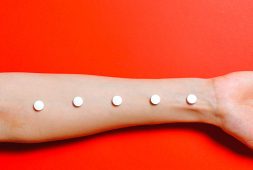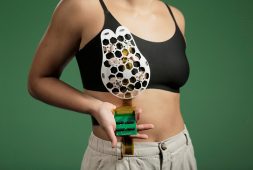Researchers Create Implantable Artificial Kidney And Have Successful Trial, Giving Hope For Dialysis Patients

A groundbreaking development in the field of medical science may soon revolutionize the lives of individuals suffering from kidney failure.
Researchers at the University of California in San Francisco have achieved a significant advancement by creating an implantable device that replicates the daily functions of a kidney, providing hope for people currently reliant on dialysis or waiting for organ transplants.
This innovative device, aptly named a “bioreactor,” has the potential to transform the treatment landscape for kidney failure patients, much like a pacemaker does for the heart. In their inaugural clinical trial, the team demonstrated that kidney cells within the bioreactor could quietly and efficiently mimic the natural functions of a human kidney.
Importantly, this revolutionary technology does not trigger the recipient’s immune system to launch an attack, a common issue that has plagued transplant recipients and required the use of harsh immunosuppressive drugs.
The current predicament faced by over 500,000 individuals in the United States alone, who require frequent dialysis sessions, highlights the urgency of finding viable solutions. Kidney transplants offer a lifeline to many, but the scarcity of available donors means that only around 20,000 patients receive this life-saving treatment every year.
The possibility of having an implantable artificial kidney could seriously prove to be a game-changer for millions of people who are desperately in need of a transplant.
The University of California’s Kidney Project has successfully conducted initial tests by implanting and testing the device in pigs over a seven-day period. The promising outcomes of these experiments pave the way for the next phase of research – a month-long trial, first involving animals and later on, progressing to human subjects.
The ultimate goal of the scientists behind this first-of-its-kind endeavor is to enhance the bioreactor by incorporating additional kidney cells capable of replicating all the essential functions of a natural kidney. This includes such tasks as maintaining the body’s fluid balance and releasing hormones to regulate blood pressure, crucial functions that directly impact a patient’s well-being.
A bioengineering professor at the UCSF School of Pharmacy, Dr. Shuvo Roy, said, “The bioartificial kidney will make treatment for kidney disease more effective and also much more tolerable and comfortable.”
“We needed to prove that a functional bioreactor will not require immunosuppressant drugs, and we did. We had no complications and can now iterate up, reaching for the whole panel of kidney functions at the human scale,” he added.
A recent study published in the journal, Nature Communications, expounded the intricacies of the engineered bioreactor.
Notably, the device can connect directly with the blood vessels and veins, allowing the flow of nutrients and oxygen – a mechanism closely mirroring the function of a transplanted kidney.
To protect the kidney cells within the bioreactor from the recipient’s immune cells, silicon membranes are employed, ensuring the device’s durability and efficacy.
For the initial phase of testing, the researchers utilized a specific type of kidney cell known as proximal tubule cells, which play a pivotal role in regulating water and salt levels within the body. Co-author H. David Humes, MD, from the University of Michigan, has previously employed these cells to successfully assist patients in the intensive care unit undergoing dialysis, yielding life-saving results.
The meticulous tracking of data from the kidney cells within the bioreactor and the recipient animals over the seven-day period following transplantation yielded positive and promising outcomes. This development in medical science has the potential to alleviate the suffering of countless individuals afflicted by kidney failure, offering them a renewed sense of hope for a healthier and more fulfilling future.
Watch the video below to see how this promising life-saving machine works.



